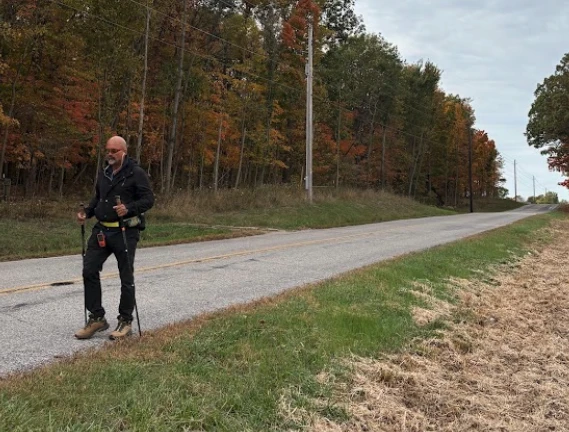

Father Gary Graf walks down a rural road during his trek across America in support of immigrants on Friday, Oct. 17, 2025. / Credit: Photo courtesy of Father Gary Graf
CNA Staff, Nov 24, 2025 / 06:00 am (CNA).
After a month and a half of walking an average of 17 miles a day, 67-year-old Father Gary Graf said he is starting to get “a little pain in one shin,” but his broken ribs are “getting much better.”
On Oct. 6, Graf, a Catholic priest from Chicago, began a journey on foot from Pope Leo XIV’s childhood home in Dolton, Illinois, to New York City to bring attention to the plight of immigrants amid the sometimes “inhumane” ways the Trump administration is treating them during its immigration enforcement actions.
He hopes to arrive at the Statue of Liberty on Ellis Island, where his own great-grandparents entered the country as immigrants, by Dec. 2.

A few weeks ago, when visiting a parish in Indiana, he was invited to ride a horse. He fell off as it galloped and broke several ribs, which led him to take one day off to recover. That day, friends walked in his stead.
Graf, the pastor of the mostly Hispanic Our Lady of the Heights Catholic Church in Chicago Heights and a longtime member of Priests for Justice for Immigrants, has committed his life to helping immigrants. Ordained in 1984, he spent five years as a priest in Mexico serving a people “with whom I fell deeply in love.”
He told CNA that after initially feeling helpless watching the raids taking place against his beloved community in his hometown of Chicago, he “felt a call that was directly from above” to start walking.

Within weeks, he was on the road. He first spoke to an old friend about his idea, who immediately connected him with Lauren Foley, the head of a public relations firm. She “immediately embraced the idea,” and between her help and that of some “young people who understand social media,” a website as well as social media accounts were set up to chronicle his journey and to share the stories of immigrant families.
Of the immigrants on whose behalf he is walking, Graf said: “I look to help people who get up every single morning to work and raise their families. If I can do this small gesture on their behalf, what a blessing it is, what a privilege.”
Asked about the most profound insight he has gained thus far, Graf said his long days walking through the wide expanse of rural America have helped him understand better the ways of people who did not grow up in a multicultural city like he did.
“We have to reverently appreciate and try to connect with those whose lives we’re passing through,” he said.
As he has spoken with people in diners along his path, Graf has developed “a greater sensitivity,” discovering that “there’s not a lot of animosity against the immigrant.”
Many of the people he has met simply do not know any, he said.
Along the way, he has also experienced unity with Christians from other denominations, as well as with those without religious faith, who all care about the humane treatment of human beings.
“I have seen so much goodness,” he said. “This has brought so many of us together: people from many different faith traditions, or none. This is an opportunity given to us.”
During his quiet walks through rural farmland, he has marveled at the amount of labor it took to build the many roads, bridges, and overpasses he has seen.
“I’m sure the hands of many immigrants helped build these things,” he reflected.
Graf said he is delighted that both the U.S. Conference of Catholic Bishops and Pope Leo XIV addressed the immigration enforcement situation in the past week.
The U.S. bishops issued a special message during its Fall Plenary Assembly two weeks ago, calling for “a meaningful reform of our nation’s immigration laws and procedures.” The bishops argued that “human dignity and national security are not in conflict. Both are possible if people of goodwill work together.”
The pope echoed the bishops’ message. On Nov. 18, he acknowledged to reporters that “every country has a right to determine who and how and when people enter.”
“But when people are living good lives, and many of them for 10, 15, 20 years, to treat them in a way that is extremely disrespectful, to say the least — and there’s been some violence, unfortunately — I think that the bishops have been very clear in what they said.”
“I think that I would just invite all people in the United States to listen to them,” the pope said.
“Both the pope and the bishops used the word ‘indiscriminate’ to talk about the way people are being singled out and aggressively having their wrists zip-tied behind their backs as their faces are pushed to the ground in front of their children,” Graf said.
“It is indeed indiscriminate. This reflects dishonesty on the administration’s part,” he said. “They said they were going after the ‘worst of the worst,’ criminals, but this isn’t the case, at least in Chicago. They’re grabbing people first and asking questions later.”
“The violent way many of these people are being treated is amoral and un-American,” he said.
Like the pope and the American bishops, Graf said he hopes the federal government will establish a more humane immigration system that respects the dignity of immigrants as well as the rule of law and the country’s right to regulate its borders.
“I am not a politician,” he said. “My job is to mediate, to speak up, in God’s name, in the united name of the Church. But can we look for a way for those who are fulfilling their responsibilities; for them to one day receive the rights of citizens?”
The priest, who appeared on “EWTN News Nightly” in October, said he has been “impressed by the media” and is grateful his message is being spread.
“If we don’t hear the whole truth, the incredible ignorance and darkness we live in can paralyze us, and keep us from doing what we ought to do,” he said.
Read More

![CNA explains: Why does the Catholic Church prohibit ‘gay marriage’? #Catholic
null / Credit: Daniel Jedzura/Shutterstock
CNA Staff, Nov 17, 2025 / 06:00 am (CNA).
Slightly over 10 years after it redefined marriage to include same-sex couples, the U.S. Supreme Court on Nov. 10 declined to revisit that controversial decision, upholding at least for now its ruling in Obergefell v. Hodges that made “gay marriage” the law of the land.A decade after that ruling, nearly a million same-sex couples in the U.S. are participating in what the law now defines as marriage. Yet the Catholic Church has continued to affirm the definition of marriage as being exclusively a union between a man and a woman. That has been the prevailing definition of marriage around the world for at least about 5,000 years of human history, though many societies have allowed polygamy, or multiple spouses, in various forms. The same-sex variant of marriage, meanwhile, only became accepted in recent decades. The Church has held since its beginning that marriage is strictly between one man and one woman. The Catechism of the Catholic Church directs that marriage occurs when “a man and a woman establish between themselves a partnership of the whole of life.” It is “by its nature ordered toward the good of the spouses and the procreation and education of offspring.”Church Fathers and theologians from the earliest days of Catholicism have consistently upheld that marriage is meant to be a lifelong, permanent union between one man and one woman, with St. Augustine explicitly naming “offspring” as one of the blessings of marriage, along with “fidelity” and “the sacramental bond.”Gay marriage a ‘misnomer’ by Church teachingJohn Grabowski, a professor of moral theology at The Catholic University of America, told CNA that marriage in the Catholic Church’s teaching is based on “unity, indissolubility, and [is ordered] toward life,” or the begetting of children.“Those criteria can only be met in a union between a man and a woman,” he said. “They cannot be met in a union between two men and two women. ‘Gay marriage’ is thus a misnomer in the Church’s understanding.”The Supreme Court’s redefinition of marriage, Grabowski argued, was an act of “judicial fiat” rather than a recognition of what marriage actually is. He said the high court was functioning more as a “cultural barometer” reflecting an erroneous shift in perception on what marriage is.“It would be similar to if the court passed a rule saying we could call a square a circle,” he said. “It’s just not based on the reality of the natural world.”The Obergefell ruling came after years of LGBT activist efforts to redefine marriage both within individual states and at the federal level. Advocates had argued that there was no meaningful reason to restrict marriage to opposite-sex couples and that to do so constituted discrimination. Many critics have claimed that the Church’s broader teaching on marriage actually left the door open for same-sex couples to marry — for instance, they argued, by allowing opposite-sex couples to marry even if one or both of the spouses are infertile, the Church implicitly divorces biological childbearing from marriage itself. Grabowski acknowledged that the Church does allow infertile couples to get married (and to stay married if infertility occurs at a later date). But he pointed out that the Church does in fact prohibit marriage for those who are impotent, or constitutionally incapable of intercourse. The key point for the Church, he said, is what St. John Paul II called the “spousal meaning of the body.” The late pope argued that men and women “exist in the relationship of the reciprocal gift of self,” ordered to the communion of “one flesh” of which the Bible speaks in Genesis. The Church’s teaching, Grabowski said, “is based on the natural law. It tells us that the way God designed us is for the good of our flourishing, both as individuals and as the good of society.”Though marriage advocates have continued to criticize the Supreme Court’s decision over the past decade, others have at times suggested a pivot away from directly challenging it at the legal level. In 2017, for instance, Winona-Rochester, Minnesota, Bishop Robert Barron affirmed his opposition to gay marriage but questioned “the prudence and wisdom” of attempting to legislatively outlaw it at that time. The bishop suggested instead that “personal witness and education” were better tools for the current political climate.Grabowski acknowledged that one “could say, realistically, the ship has sailed and the political question is dead.”“But that’s a political judgment,” he said. Catholics should not lose sight of the goal to reestablish correct laws on marriage, he argued.“In terms of something to hope for, pray for, and to the degree that we’re able to, work for it — that’s something Catholics should aspire to.”](https://unitedyam.com/wp-content/uploads/2025/11/cna-explains-why-does-the-catholic-church-prohibit-gay-marriage-catholic-null-credit-daniel-jedzura-shutterstockcna-staff-nov-17-2025-0600-am-cna-slightly-over-10.webp)



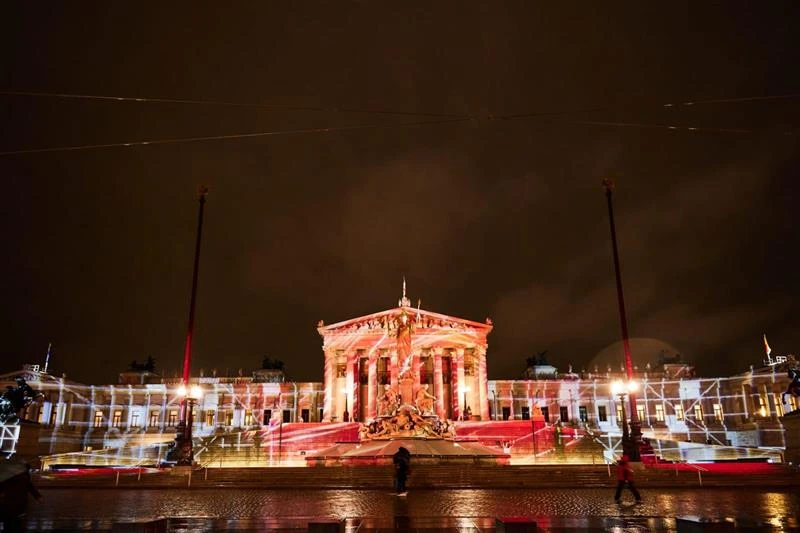

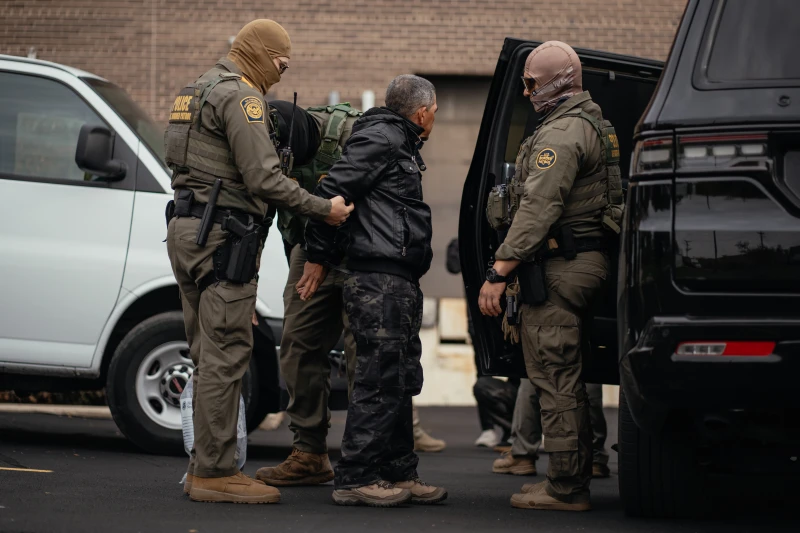

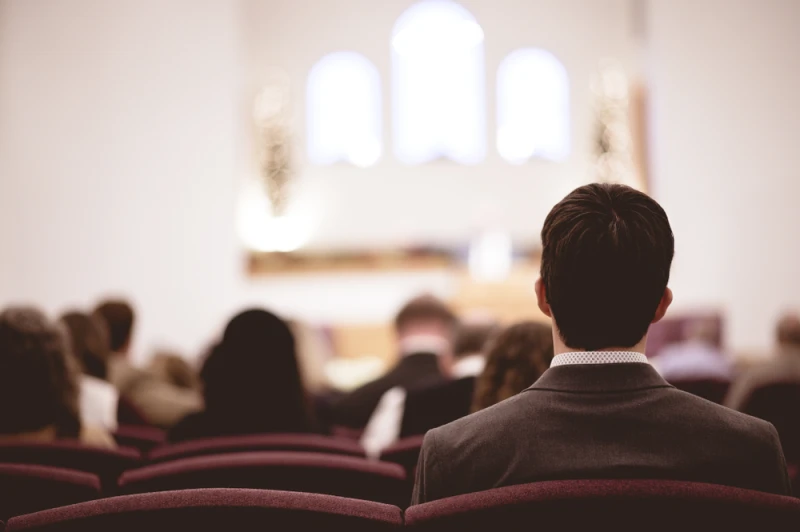



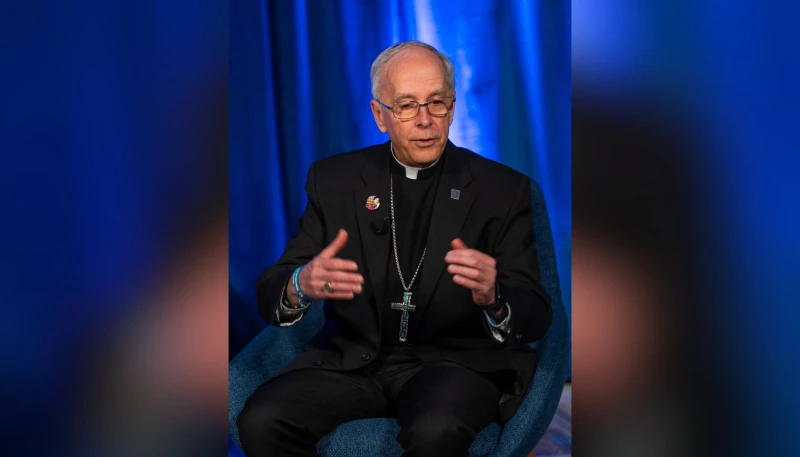

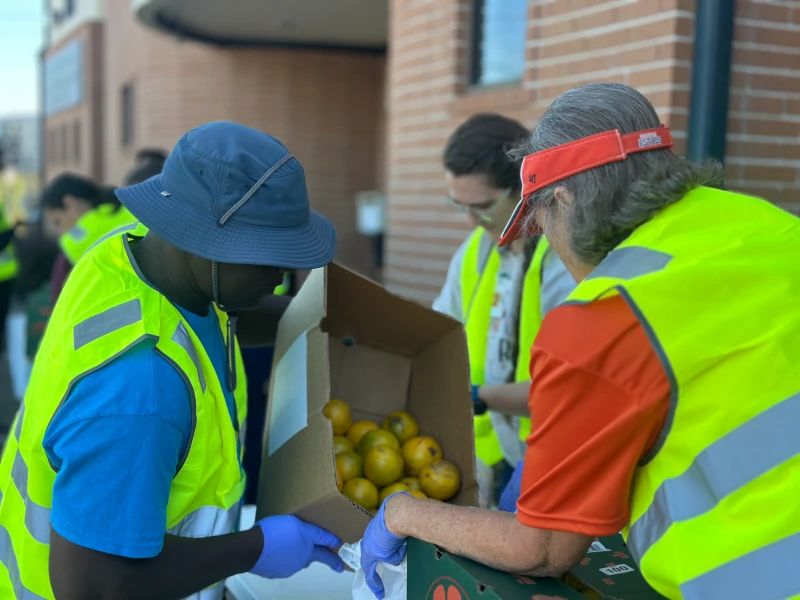






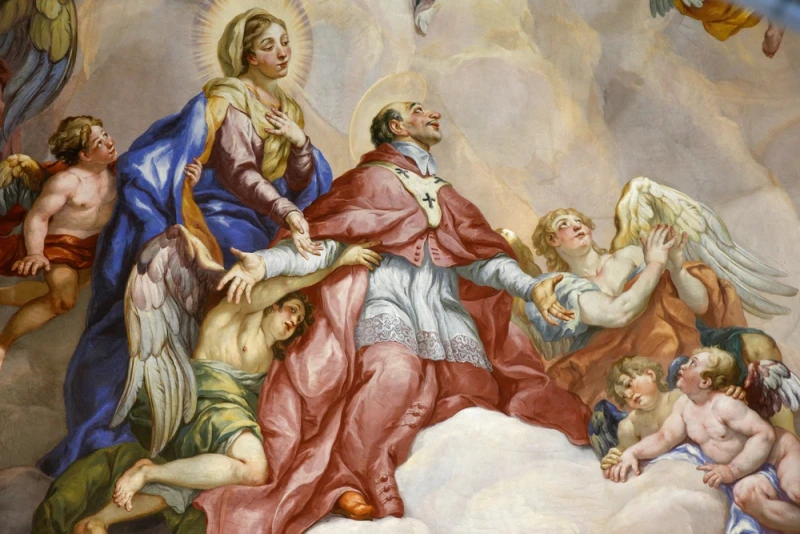

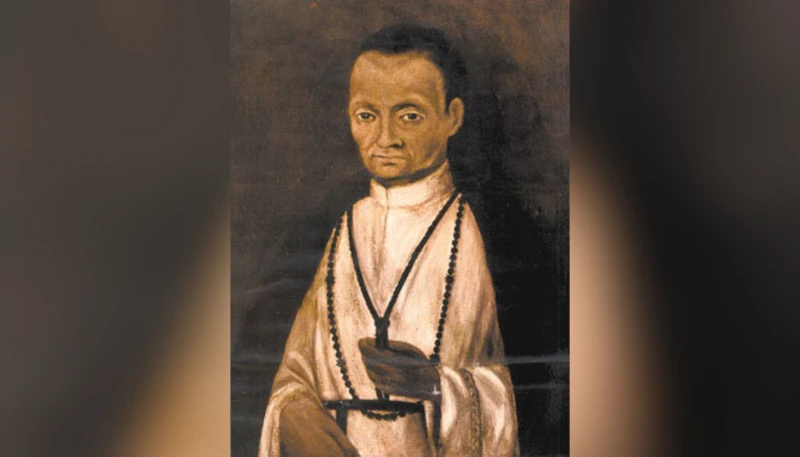

![Preparing for death with the Sister Servants of Mary #Catholic
The Sister Servants of Mary hold a procession with the statue of Our Lady of the Assumption at Mary Health of the Sick Convalescent Hospital in Newbury Park, California. / Credit: Photo courtesy of the Servants of Mary, Ministers to the Sick
CNA Staff, Nov 2, 2025 / 06:00 am (CNA).
When a 93-year-old Catholic father from New Orleans had a stroke, he knew he was prepared to die.Clinton Jacob attended adoration and Mass daily and was “rarely without a prayer book or rosary in hand,” according to his daughter, Kim DeSopo.“[He] never spoke of death with fear or sadness,” she told CNA. “He would simply say, ‘I’ll be going home.’”But not everyone feels prepared for death.The Servants of Mary, Ministers to the Sick, is a Catholic community of sisters who dedicate their lives to caring for the sick and dying in New Orleans and around the world. As nurses, they are at the bedside of the dying through the long nights, whether their patients are lifelong Catholics or have never thought about religion.The sisters often encounter patients as well as family members who are struggling to accept “an illness or imminent death,” Sister Catherine Bussen, a Servant of Mary, told CNA.“Many times, there is a need for reconciliation within the family, for a return to their faith, for acceptance of their condition, etc.,” Bussen said.As medical professionals, the sisters provide physical treatment, but they also walk with their patients throughout their illnesses, encouraging patients and families “always with the hope of eternal life,” Bussen said. DeSopo, Jacob’s daughter, called the sisters for support. The next day, Bussen arrived at their doorstep, and every night for two weeks, she sat at Jacob’s bedside. Bussen’s presence was “a gift,” DeSopo said. “Sister Catherine brought peace and calm into a time filled with stress and sorrow.”“Her prayers, patience, and care provided comfort not only to my father but also to my mother, who could finally sleep knowing someone trustworthy and compassionate was by his side,” DeSopo said, recalling Bussen’s “selfless dedication” and “unwavering faith.” Bussen was with Jacob when he died on Sept. 26, 2024. She prepared his body, cleaning him and sprinkling him with holy water, and then prayed with his wife and daughter.“I will never forget the care and dignity she gave him, even after his final breath,” DeSopo said.Sister Catherine (left) and Sister Dorian Salvador (right) pray for the soul of Kim DeSopa’s father on Oct. 1, 2024, at St. Clement of Rome Church in Metairie, Louisiana. Credit: Photo courtesy of Kim DeSopa and Sister CatherineMary at the foot of the cross “I was sick and you visited me.”This Scripture verse, Matthew 25:36, summarizes the charism of the Servants of Mary, according to Bussen. When they care for the sick, they care for Christ.The sisters will care for anyone in need, preferably within the sick person’s own home. In those who are suffering, the sisters “discover Jesus carrying his cross,” Bussen explained. “By caring for the sick, we believe that we are caring for Christ himself, who still suffers today in the suffering mystical body of Christ,” she said.Sister Angélica Ramos cares for Mrs. Hura, a resident of Mary Health of the Sick Convalescent Hospital in Newbury Park, California. Credit: Photo courtesy of the Servants of Mary, Ministers to the SickFounded in Madrid, Spain, in the 1800s, the sisters care for the sick and dying in Louisiana, Kansas, and California as well as throughout Central and South America, Spain, France, England, Italy, Cameroon, the Philippines, and Indonesia. They run a hospital for the poor in Bamenda, Cameroon, as well as two missionary houses in Oaxaca, Mexico.The sisters look to Mary as an example as they accompany those who are suffering.“Although we are not able to take away someone’s cross, we are present to them, offering all to the Father, like Mary did at the cross of Jesus, that all suffering may be redemptive and fruitful,” Bussen said.“Every one of us sisters would tell you that it is an absolute privilege to be able to enter into the intimacy of a family’s home, listening to the dying, praying with them, and encouraging them on the final stage of their journey as their soul passes into eternity,” she said.Sister Servants of Mary Fatima Muñoz and Carmela Sanz (front) celebrate a May crowning in Kansas City, Kansas. Credit: Photo courtesy of the Servants of Mary, Ministers to the Sick“Our Catholic Christian faith is a beautiful comfort during these times because it is all about looking forward to the promised life to come, the whole goal of our lives, eternal life,” Bussen said.One woman from New Orleans received news no one wants to hear — she had a terminal illness. Though she was not religious, she knew she needed help and did not know who else to turn to, so she called the Servants of Mary.As they cared for her and helped her deal with her terminal diagnosis, the sisters learned the woman was “completely alone in the world,” said Bussen, who took care of her. Other people from the surrounding Catholic community volunteered to stay with her.During that time, the woman found a home in the Catholic Church and received the sacrament of baptism.Her “anxiety was transformed into peace,” said Bussen, who was with her as she died.“As the end drew near, she had a new faith family,” Bussen said. “She was no longer alone.”Remembering the dead The life of a sister Servant of Mary is “contemplative in action.” The sisters unite “our prayer life with our work — going about what we are doing, in all the business of daily life, in a prayerful spirit,” Bussen said.The sisters have time set aside for prayer and work, “but these two aspects cannot be separated from one another,” she continued. “The grace and light received in prayer flows into our work and ministry, and everything we experience in our ministry is taken to prayer.”The Servants of Mary, Ministers to the Sick care for the sick and the dying. Credit: Photo courtesy of the Servants of Mary, Ministers to the SickThroughout the year, the sisters take special care to remember the dead. In November especially, Bussen said the sisters “remember all our patients who have died with us by placing their names in our chapel and offering Masses for their eternal happiness.”“Even after a patient has passed,” she said, “and they no longer need physical care, our ministry continues by praying for their soul.”](https://unitedyam.com/wp-content/uploads/2025/11/preparing-for-death-with-the-sister-servants-of-mary-catholic-the-sister-servants-of-mary-hold-a-procession-with-the-statue-of-our-lady-of-the-assumption-at-mary-health-of-the-sick-convalescent-h.webp)










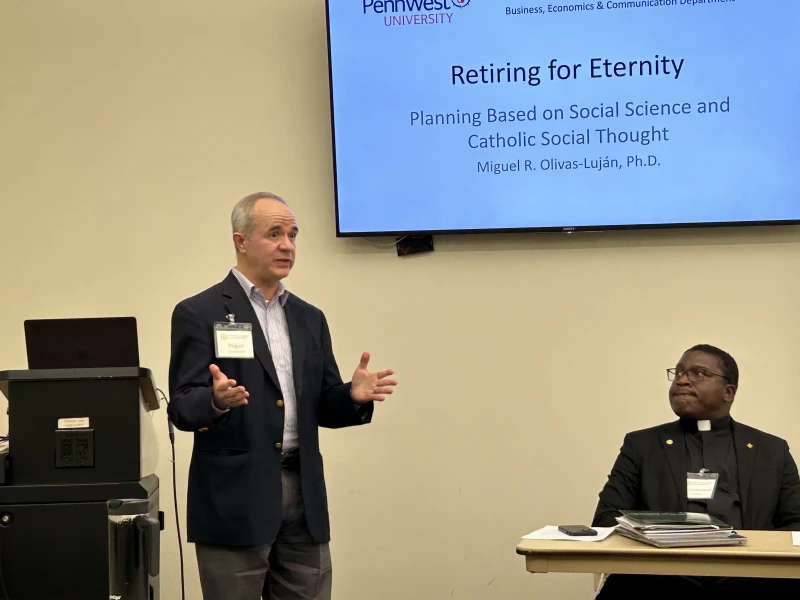


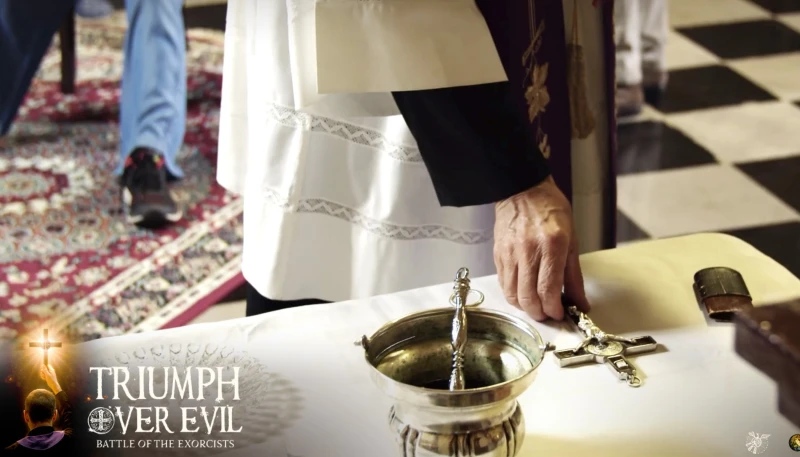



![‘Every execution should be stopped’: How U.S. bishops work to save prisoners on death row #Catholic
null / Credit: txking/Shutterstock
CNA Staff, Oct 25, 2025 / 06:00 am (CNA).
Bishops in multiple U.S. states are leading efforts to spare the lives of condemned prisoners facing execution — urging clemency in line with the Catholic Church’s relatively recent but unambiguous declaration that the death penalty is not permissible and should be abolished. Executions in the United States have been increasingly less common for years. Following the death penalty’s re-legalization by the U.S. Supreme Court in 1976, executions peaked in the country around the turn of the century before beginning a gradual decline.Still, more than 1,600 prisoners have been executed since the late 1970s. The largest number of those executions has been carried out in Texas, which has killed 596 prisoners over that time period.As with other states, the Catholic bishops of Texas regularly petition the state government to issue clemency to prisoners facing death. Jennifer Allmon, the executive director of the Texas Catholic Conference of Bishops, told CNA that the state’s bishops regularly urge officials to commute death penalty sentences to life in prison. “We refer to it as the Mercy Project,” she said. Though popular perception holds that the governor of a state is the ultimate arbiter of a condemned prisoner’s fate, Allmon said in Texas that’s not the case. “The state Board of Pardons and Paroles has the ultimate authority,” she said. “The governor is only allowed to issue a 30-day stay on an execution one time. He doesn’t actually have the power to grant a permanent clemency.” “We don’t encourage phone calls to the governor because it’s not going to be a meaningful order,” she pointed out. “The board has a lot more authority.”Allmon said the bishops advocate on behalf of every condemned prisoner in the state. “We send a letter to the Board of Pardons and Paroles and copy the governor for every single execution during the time period when the board is reviewing clemency applications,” she said. “Typically they hold reviews about 21 days before the execution. We time our letters to arrive shortly before that.” “We research every single case,” she said. “We speak to the defendant’s legal counsel for additional information. We personalize each letter to urge prayer for the victims and their families, we mention them by name, and we share any mitigating circumstances or reason in particular that the execution is unjust, while always acknowledging that every execution should be stopped.”Some offenders, Allmon said, want to be executed. “We do a letter anyway. We think it’s important that on principle we speak out for every execution.”In Missouri, meanwhile, the state’s Catholic bishops similarly advocate for every prisoner facing execution by the government. Missouri has been among the most prolific executors of condemned prisoners since 1976. More than half of the 102 people executed there over the last 50 years have been under Democratic governors; then-Gov. Mel Carnahan oversaw 38 state executions from 1993 to 2000 alone. Jamie Morris, the executive director of the Missouri Catholic Conference, told CNA that the state bishops “send a clemency request for every prisoner set to be executed, either through a letter from the Missouri Catholic Conference or through a joint letter of the bishops.”“We also highlight every upcoming execution through our MCC publications and encourage our network to contact the governor to ask for clemency,” he said. Individual dioceses, meanwhile, carry out education and outreach to inform the faithful of the Church’s teaching on the death penalty. What does the Church actually teach?The Vatican in 2018 revised its teaching on the death penalty, holding that though capital punishment was “long considered an appropriate response” to some crimes, evolving standards and more effective methods of imprisonment and detention mean the death penalty is now “inadmissible because it is an attack on the inviolability and dignity of the person.”The Church “works with determination for its abolition worldwide,” says the Catechism of the Catholic Church, the revision of which was approved by Pope Francis. The Church’s revision came after years of increasing opposition to the death penalty by popes in the modern era. Then-Pope John Paul II in 1997 revised the catechism to reflect what he acknowledged was a “growing tendency, both in the Church and in civil society, to demand that [the death penalty] be applied in a very limited way or even that it be abolished completely.”The Death Penalty Information Center says that 23 states and the District of Columbia have abolished capital punishment. Morris told CNA that bills to abolish the death penalty are filed “every year” in Missouri, though he said those measures have “not been heard in a legislative committee” during his time at the Catholic conference. Bishops have thus focused their legislative efforts on advocating against a provision in the Missouri code that allows a judge to sentence an individual to death when a jury cannot reach a unanimous decision on the death penalty. Brett Farley, who heads the Catholic Conference of Oklahoma, said the state’s bishops have been active in opposing capital punishment there after a six-year moratorium on the death penalty lapsed in 2021 and executions resumed. Oklahoma City Archbishop Paul Coakley and Tulsa Bishop David Konderla “have been very outspoken both in calling for clemency of death row inmates and, generally, calling for an end to the death penalty,” Farley said. The prelates have called for abolition via Catholic publications and in op-eds, he said.The state’s bishops through the Tulsa Diocese and Oklahoma City Archdiocese have also instituted programs in which clergy and laity both minister to the condemned and their families, Farley said. The state Catholic conference, meanwhile, has led the effort to pass a proposed legislative ban on the death penalty. That measure has moved out of committee in both chambers of the state Legislature, Farley said. “We have also commissioned recent polls that show overwhelming support for moratorium among Oklahoma voters, which demonstrate as many as 78% agreeing that ‘a pause’ on executions is appropriate to ensure we do not execute innocent people,” he said. Catholics across the United States have regularly led efforts to abolish the death penalty. The Washington, D.C.-based group Catholic Mobilizing Network, for instance, arose out of the U.S. bishops’ 2005 Catholic Campaign to End the Use of the Death Penalty. The group urges activists to take part in anti-death penalty campaigns in numerous states, including petitioning the federal government to end the death penalty, using a “three-tiered approach of education, advocacy, and prayer.”Catholics have also worked to end the death penalty at the federal level. Sixteen people have been executed by the federal government since 1976. Executions in the states have increased over the last few years, though they have not come near the highs of the late 1990s and early 2000s. Allmon said Texas is seeing “fewer executions in general” relative to earlier years. The number of executions was very high under Gov. Rick Perry, she said; the Republican governor ultimately witnessed the carrying out of 279 death sentences over his 15 years as governor. Since 2015, current Gov. Greg Abbott has presided over a comparatively smaller 78 executions. “It still shouldn’t happen,” she said, “but it’s a huge reduction.”](https://unitedyam.com/wp-content/uploads/2025/10/every-execution-should-be-stopped-how-u-s-bishops-work-to-save-prisoners-on-death-row-catholic-null-credit-txking-shutterstockcna-staff-oct-25-2025-0600-am-cna-bi.webp)

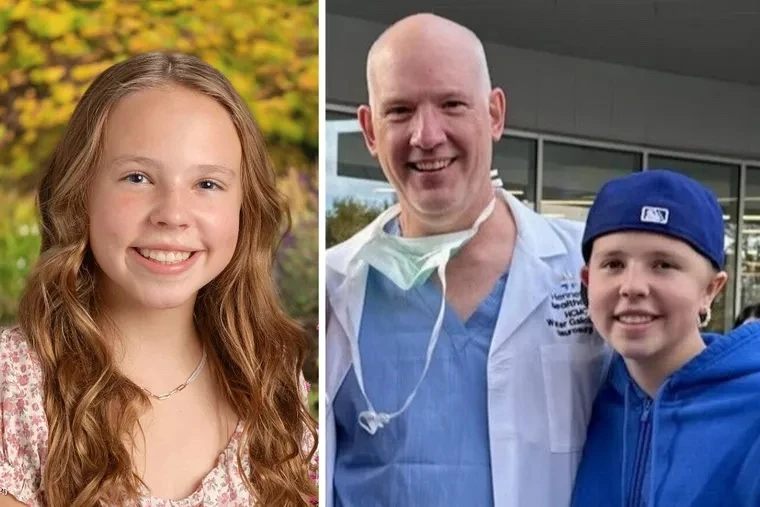



![Bill proposed in Hungary could require priests to violate seal of confession #Catholic
null / Credit: AS photo studio/Shutterstock
Washington, D.C. Newsroom, Oct 24, 2025 / 06:00 am (CNA).
Here is a roundup of Catholic world news from the past week that you might have missed:Bill proposed in Hungary could require priests to violate seal of confessionThe Permanent Council of the Hungarian Catholic Bishops’ Conference has expressed shock over the proposition of a bill that would require Catholic priests to violate the seal of confession. “This is in serious conflict with the agreement between the Republic of Hungary and the Holy See of Feb. 9, 1990, which states that the Catholic Church in our county operates on the basis of [canon law],” the council stated in an Oct. 17 press release. The council expressed regret over “extremely crude” and “baseless sentiment-mongering and slander” that has occurred during the ongoing election cycle. “We emphasize to our priests, all believers, and society that we are not a political organization, we do not wish to participate in the campaign,” it stated. “Our mission is to serve the salvation of souls.” Church in South Korea pledges help for Timorese migrants The Catholic Church in South Korea has pledged to help improve the situation for migrants from the small Catholic-majority island country of Timor-Leste.During an Oct. 11–15 visit to the island, a 12-member delegation of South Korean Catholics from the Committee for Pastoral Care for Migrants of the Catholic Bishops’ Conference of Korea visited with groups that send migrant workers to South Korea, Cardinal Virgílio do Carmo da Silva, as well as President José Ramos-Horta and Prime Minister Xanana Gusmão, according to UCA News. The delegation pledged to help bring about “better protection and welfare of migrant communities” and to “improve better pastoral care program[s] for Timor-Leste migrants,” of which there are approximately 7,000 living in South Korea.Australian archbishop renews commitment to safeguarding childrenArchbishop Tony Ireland of Hobart in Tasmania, Australia, has reaffirmed his commitment to ensuring all Catholic communities and workplaces throughout his diocese uphold safe environment standards. “The safety and well-being of all who engage with the Church is foremost in my mind and heart,” the archbishop said in an Oct. 17 statement. “Ensuring that every person — regardless of age or circumstance — feels safe, valued, and respected is an essential part of our mission and witness.” On behalf of his archdiocese, Ireland endorsed the National Catholic Safeguarding Standards, stating: “Our commitment to these standards is unwavering, reflecting zero tolerance of any form of abuse, neglect, or exploitation.” The archdiocese has remained engaged in its safeguarding measures since 2017. Madagascar cardinal urges international community to refrain from sanctioning country Cardinal Désiré Tsarahazana of Toamasina, Madagascar, is appealing to the international community not to sanction Madagascar in wake of a coup staged by military-backed youth protesters. The cardinal told Vatican media that imposing sanctions “would be illogical and immoral.”“Supporting young people who demand a better life and then killing them with sanctions would make no sense,” Vatican News Italy reported. Religious conversion case against Christian university officials in India droppedThe Supreme Court of India has dropped a criminal case against three Christian university officials in Uttar Pradesh who were accused of violating the state’s stringent anti-conversion laws. The court dropped the case on Oct. 17, citing “legal defect” in the allegations filed by Himanshu Dixit, vice president of the World Hindu Council, according to UCA News. The Hindu leader had accused officials from the Presbyterian Sam Higginbottom University of Agriculture, Technology, and Sciences of “unlawful conversion activities” in addition to “cheating, criminal intimidation, and forgery,” according to the report.The judges noted that under Uttar Pradesh law, only an “aggrieved” person — that is, a victim or close relative — of the violation is permitted to lodge a complaint. The court declined to dismiss charges related to cheating and forgery but ordered protection of the accused from arrest.Church in Mozambique proposes political guide for dialogueThe Episcopol Justice and Peace Commission in Mozambique has proposed a document outlining “concrete proposals for reforms of the state, the electoral system, natural resource policies, economic inclusion, and national reconciliation.”The document, “A Political Guide for National Dialogue,” proposes limited power for the president in appointing heads of state, that judges be elected among their peers, and that the position of secretary of state be eliminated in provinces for the sake of the country’s budget, according to an Oct. 20 report from Vatican News. The guide also recommends the elimination of electronic voting to combat fraud as well as economic and natural resource reforms. To address the county’s unrest, the document proposes “building a collective memory based on truth, exercising forgiveness and mutual listening, promoting a culture of dialogue and trust, and changing mentalities to value differences while combatting prejudices.”Latin American bishops host ‘virtual jubilee’ for Indigenous people The Episcopal Conference of Latin America hosted a virtual jubilee event for Indigenous people of Latin America and the Caribbean on Oct. 14–16. Organized by the Advisory Team on Indian Theology, together with the Pastoral Care of Indigenous People of the Latin American and Caribbean Episcopal Council and the Latin American Ecumenical Articulation of Indigenous Pastoral Care, the event centered on sharing experiences “as pilgrims of hope together with our Indigenous people, authentic custodians of culture, and our common home,” according to a message from Cardinal Michael Czerny, SJ, prefect of the dicastery for promoting integral human development.“Your love for the earth, your respect for the elderly, your sense of community, and your ability to live in harmony with creation are a gift to the whole Church. You teach that life is best understood when lived simply, in relationship with God, with nature, and with others,” he said.](https://unitedyam.com/wp-content/uploads/2025/10/bill-proposed-in-hungary-could-require-priests-to-violate-seal-of-confession-catholic-null-credit-as-photo-studio-shutterstockwashington-d-c-newsroom-oct-24-2025-0600-am-cna-here-i.webp)

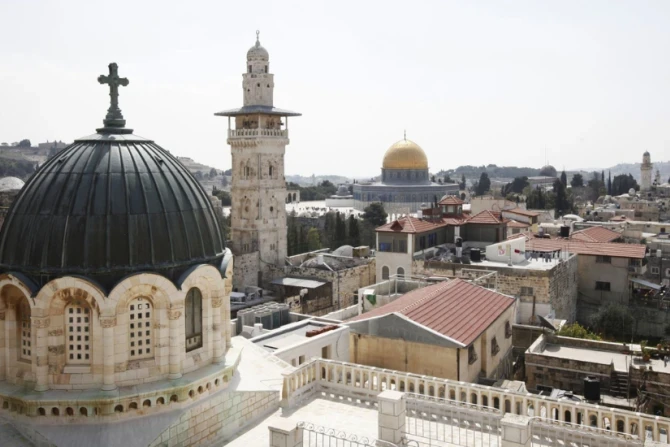

![Trump administration expands IVF and other fertility treatment coverage #Catholic
The Trump administration will expand access to in vitro fertilization drugs and procedures. / Credit: sejianni/Shutterstock
CNA Staff, Oct 16, 2025 / 18:53 pm (CNA).
President Donald Trump is expanding access to in vitro fertilization and other fertility treatments by partnering with pharmaceutical companies and expanding insurance options. According to a White House announcement on Oct. 16, the Trump administration is working with major pharmaceutical companies to bring IVF drugs to the U.S. at lower prices. The administration is also expanding insurance coverage for fertility care.The agreement with leading pharmaceutical group EMD Serono will make IVF drugs available “at very, very heavily reduced prices — prices that you won’t even believe,” Trump said on Thursday in a livestream from the Oval Office. According to the announcement, women who buy directly from TrumpRx.gov, a website that will launch in January 2026, will get a discount equivalent to 796% of the negotiated price for GONAL-F, a widely used fertility drug.The FDA will also be expediting its review of an IVF drug that is not yet available in the U.S., which Trump said “would directly compete against a much more expensive option that currently has a monopoly in the American market, and this will bring down costs very significantly.”In addition, the Trump administration will enable employers to offer separate plans for fertility issues, comparable to the standard life, dental, and vision plans typically available from employers.“This will make all fertility care, including IVF, far more affordable and accessible,” Trump said. “And by providing coverage at every step of the way, it will reduce the number of people who ultimately need to resort to IVF, because couples will be able to identify and address problems early.” “The result will be healthier pregnancies, healthier babies, and many more beautiful American children,” Trump continued. These fertility benefits will include both IVF and other fertility treatments “that address the root causes of infertility,” according to the Oct. 16 announcement. “There’s no deeper happiness and joy [than] raising children, and now millions of Americans struggling with infertility will have a new chance to share the greatest experience of them all,” Trump said. IVF is a fertility treatment opposed by the Catholic Church in which doctors fuse sperm and eggs in a laboratory to create human embryos and implant them in the mother’s womb. To maximize efficiency, doctors create excess human embryos and freeze them. Undesired embryos are routinely destroyed or used in scientific research.Lila Rose, a devout Catholic and founder of the pro-life group Live Action, condemned the administration’s action, noting that “IVF kills more babies than abortion.”“Millions of embryos are frozen, discarded, or destroyed,” Rose said in a post on X on Oct. 16.“Only 7% of embryos created survive to birth,” she said. IVF is “not a solution to fertility struggles.” In response to Trump’s announcement, the March for Life celebrated the White House’s focus on children and fertility, while cautioning the administration to protect human life at all its stages, even as embryos. “March for Life appreciates that President Trump has heard and is responding to so many Americans who dream of becoming parents,” the March for Life said in a statement shared with CNA. “The desire for parenthood is natural and good. Children are a blessing. Life is a gift. The White House’s announcement today is rooted in these core truths.” The March for Life noted that “every human life is precious — no matter the circumstances” and urged policymakers to protect human life. “We continue to encourage any federal government policymaking surrounding IVF to prioritize protecting human life in its earliest stages and to fully align with basic standards of medical ethics,” the statement read. The group also welcomed “the administration’s commitment to making groundbreaking advancements in restorative reproductive medicine more accessible and available to American women.” Catholic institutes such as the Saint Paul VI Institute have pioneered a form of restorative reproductive medicine called NaProTechnology. “Naprotech” aims to discover and address the root cause of fertility issues via treatment and surgery if necessary. Some conditions that can affect fertility include endometriosis — which affects nearly 1 in 10 women — and polycystic ovarian syndrome (PCOS), the leading cause of infertility.“RRM aims to resolve rather than ignore underlying medical issues, increasing health and wellness while also restoring fertility, and responding to the beautiful desire for children while avoiding any collateral loss of human life,” March for Life stated.](https://unitedyam.com/wp-content/uploads/2025/10/trump-administration-expands-ivf-and-other-fertility-treatment-coverage-catholic-the-trump-administration-will-expand-access-to-in-vitro-fertilization-drugs-and-procedures-credit-sejianni-shu.webp)

![Israelis, Gazan Christians, Catholics in U.S. weigh in on historic peace deal #Catholic
Daniel Ayalon, former Israeli ambassador to the U.S. and former foreign policy adviser to Prime Minister Benjamin Netanyahu, speaks with “EWTN News Nightly” anchor Veronica Dudo on Oct. 10, 2025. / Credit: “EWTN News Nightly”
Washington, D.C. Newsroom, Oct 11, 2025 / 08:00 am (CNA).
Former Israeli government officials, representatives for the Latin Patriarchate of Jerusalem, and Catholic advocates for Israel in the U.S. spoke with EWTN News this week following the historic peace deal brokered by the Trump administration between Israel and Hamas. News of the peace agreement came as “a joy for the entire population of Gaza, for the families of the hostages, and for our parish, our little parish there in Gaza,” according to Farid Jabran, the public and government affairs adviser for the Latin Patriarchate of Jerusalem.In an Oct. 10 interview with “EWTN News Nightly,” Jabran noted there is still an air of “expectation” as the region waits to “see what happens.”Jabran revealed that Latin Patriarch Cardinal Pierbattista Pizzaballa had spoken to the pastor of Gaza’s only Catholic Church, Father Gabriel Romanelli. “They are all very happy that they are not hearing more bombings,” Jabran said of the Gazan parish community. “They expect a better future, but still they wait to see what is going to happen … They’re all waiting to see what happens after the release of the hostages.” “The Catholic Church, as the patriarch, as the pope, as many said, will give anything in its power to to offer assistance, to offer good services when it’s asked to do so,” said Jabran, noting that the Latin Patriarchate has “big plans for Gaza,” including the construction of a new hospital in the southern region of the enclave. “We’ll have more details on that that will be supported by the Italian Conference of Catholic Bishops and the Latin Patriarchate,” he revealed, adding: “We are planning to create field hospitals in several places and to work on schools and education for the children, not only for the Christian community [but] for everyone.”Breaking down the peace deal In an Oct. 10 appearance on “EWTN News Nightly,” Daniel Ayalon, former Israeli ambassador to the U.S. and former foreign policy adviser to Prime Minister Benjamin Netanyahu, shared how the historic peace deal brokered by the Trump administration will play out in the coming days. Though both Israel and Hamas signed on to the first phase of the peace plan set out by the Trump administration on Wednesday, reports of ongoing bombardment from the IDF in northern Gaza was reported on Friday morning. Avalon explained that “there was a threat that the IDF depicted, and they had to take care of it.” “We have enough experience with Hamas that even though they agree on a ceasefire, they continue their aggression,” he told “EWTN News Nightly” anchor Veronica Dudo. “But we adhere, or Israel adheres to the agreement and to the ceasefire terms … We started right on time, and we are now back off the former position, and hopefully we will see our hostages within the next 72 hours.” President Donald Trump announced on Truth Social on Wednesday that both parties had agreed to the first phase of his 20-point peace plan for the Middle East, in which he noted: “ALL of the hostages will be released very soon, and Israel will withdraw their troops to an agreed-upon line as the first steps toward a strong, durable, and everlasting peace.”“I think that we should all acknowledge the leadership and the negotiation capabilities of President Trump and his team,” Ayalon said. “I believe that they found the right moment to really bring together an assembly of protagonists in the region that could really be instrumental, namely, Turkey, Qatar, and Egypt, that put a lot of pressure on Hamas that was not there before.” Given that the first phase goes according to plan, Ayalon said, Israel will release its Palestinian prisoners, and IDF troops will continue to withdraw, allowing Gazans to return to their homes. After which, he said, comes the precarious task of disarming Hamas, which will include dismantling its vast network of tunnels. This task, he predicted, could take several months. “I think the people of Gaza deserve this,” Ayalon reflected. “After these two horrendous years … they were actually held hostage by Hamas, which used them as cannon fodder or as human shields.” The former ambassador further expressed hope that Gazans ensure “no more terror organizations will grow there to a monstrous dimension, as we did with Hamas.”Looking ahead, Ayalon expressed hope for a broader normalization of relations between Israel and its Arab neighbors, such as Saudi Arabia and others, as well as other major Islamic countries such as Indonesia or Pakistan, to take place alongside reconstruction. He also floated the start of “a political process with the Palestinians,” noting Hamas will no longer govern the enclave. “It probably will be the Palestinian Authority,” he said, noting that under the agreement the governing body is mandated to promote peaceful coexistence and to “do away with terror” and indoctrination in its schools. “Then we can talk about real peace between Israel and the Palestinians, which may be a cornerstone of a much broader peace with the region,” he said, adding: “And we all deserve it — the world deserves it, and I think it will be to the benefit and the prosperity of all here.”Remembering Oct. 7On the two-year anniversary of the Oct. 7, 2023, Hamas attacks on Israel, Philos Catholic Director Simone Rizkallah told CNA: “This is not a day to discuss U.S. foreign policy or to analyze political dynamics.” Even with the Trump administration’s efforts in the background to make a peace deal between the Hamas terrorist group and Israel, Rizkallah emphasized, “Oct. 7 is a day to live out the beatitude ‘Blessed are they who mourn.’” Philos Catholic is an arm of the U.S-based nonprofit organization, the Philos Project, which works to foster Catholic-Jewish relations. Over 1,200 Israelis and 22 Americans were confirmed killed, and thousands more wounded in the wake of Hamas’ large-scale surprise attack on Israel. An additional 251 were taken hostage into the Gaza Strip.“We mourn with the Jewish people and with Israel as if we are mourning for our own selves — because, in truth, we are,” she said. “To stand with our Jewish brothers and sisters today is not a political act, and it is certainly not a partisan one. The Church is not a political entity. This is about faith and the culture that faith gives birth to.”According to Rizkhallah: “To speak up and stand with our Jewish friends is not sentimental — it is an act of spiritual realism and solidarity with our own people in the faith.” To do so, she continued, is not a partisan act but a “part of orthodox Catholic theology, rooted in the heart of the Church’s self-understanding.”Catholics, she urged, should “incarnate this love by showing up in the flesh” for their Jewish friends and neighbors. “Call your Jewish friends,” she said. “Reach out to your local synagogue or Jewish community center. Drop off white roses in the wake of antisemitic attacks — a symbol of Christian resistance to hatred, inspired by the White Rose movement that opposed Nazi Germany.”Philos Catholic will host an event commemorating the 60th anniversary of Nostra Aetate this year at the Saint John Paul II National Shrine in Washington, D.C., which will be available to attend both in person and virtually.](https://unitedyam.com/wp-content/uploads/2025/10/israelis-gazan-christians-catholics-in-u-s-weigh-in-on-historic-peace-deal-catholic-daniel-ayalon-former-israeli-ambassador-to-the-u-s-and-former-foreign-policy-adviser-to-prime-minister-ben.webp)






![Brooklyn usher murdered in subway remembered as ‘tremendous man of faith’ #Catholic
Nicola Tanzi. / Credit: Photo courtesy of Deacon Anthony Mammoliti
CNA Staff, Oct 10, 2025 / 15:37 pm (CNA).
A Catholic man who served as an usher at his Brooklyn parish before he was killed in a brutal attack in a city subway is being remembered as a “good soul” with a “tremendous” faith in Christ.Sixty-four-year-old Nicola Tanzi was killed on Oct. 7, when police say 25-year-old David Mazariegos beat him to death in the Jay Street-MetroTech station in Brooklyn. He later died at New York-Presbyterian Brooklyn Methodist Hospital. New York City Police Commissioner Jessica Tisch described the attack as “horrific.” Police were able to apprehend the suspect using photos and a physical description transmitted through their phones, Tisch said. Mazariegos has reportedly been arrested multiple times before. U.S. Transportation Secretary Sean Duffy said on X that state Gov. Kathy Hochul “has blood on her hands” over the death.“Nicola Tanzi’s life was taken by another repeat offender roaming New York’s streets freely,” Duffy wrote. ”New York needs leaders who will back the blue and make America’s transit system safe again.”Victim mourned as a ‘simple, good person’Those who knew Tanzi have mourned his death in the days following his murder. Deacon Anthony Mammoliti told CNA in an interview on Oct. 10 that Tanzi was “probably the most Christ-like parishioner I’ve encountered.” Mammoliti serves at St. Dominic’s Parish in Bensonhurst where Tanzi attended. Tanzi served as an usher there at the Italian Mass for at least 10 years, the deacon said. “He was a man who would give of himself,” Mammoliti said. “In his civilian job, he would often, without hesitation, switch shifts to allow married colleagues to have family time. When I engaged with him in the parish, it was always with a congenial smile.”Tanzi would regularly greet elderly parishioners with a “Buon Giorni!” and “Come Stai!” while holding the door for them, Mammoliti said. The deacon said the parish is in shock over the news. “We’re all in a state of disbelief. The old expression, ‘Bad things happen to good people,’ that’s the first thought that came to mind,” he said. Deacon John Heyer of Sacred Hearts and St. Stephen Catholic Church in the city’s Carroll Gardens neighborhood told CBS News that Tanzi was “definitely a good person. Like, a simple, good person.”“[He was the] type of guy who went to work and came home and was part of different community organizations,” Heyer said. “Especially those related to his family’s heritage and roots in Mola di Bari, Italy.”Mazariegos, the suspect in the killing, reportedly has multiple criminal cases open against him throughout the city. He allegedly admitted to the killing afterward. Mammoliti said Tanzi, a “tremendous man of faith” with a “good soul,” had he survived the assault, would have forgiven his assailant. “He would have done what he normally did, which was to be a good Christian,” he said.“Your first initial reaction [upon hearing the news] is, you know, eye for eye, tooth for tooth,” the deacon admitted. “But we’re called to be people of faith. We’re called to emulate the teachings of the Gospel.” “We would honor Mr. Tanzi if we would live up to what Jesus teaches us, which is to forgive our enemies.”](https://unitedyam.com/wp-content/uploads/2025/10/brooklyn-usher-murdered-in-subway-remembered-as-tremendous-man-of-faith-catholic-nicola-tanzi-credit-photo-courtesy-of-deacon-anthony-mammoliticna-staff-oct-10-2025-15.webp)

![Washington state drops effort to make priests violate seal of confession in reporting law #Catholic
null / Credit: Brian A Jackson/Shutterstock
CNA Staff, Oct 10, 2025 / 14:37 pm (CNA).
Officials in Washington state have agreed to back off a controversial effort to force priests there to violate the seal of confession as part of a mandatory abuse reporting law. A motion filed in federal district court on Oct. 10 affirmed that state and local governments would stop attempting to require priests to report child abuse learned during the sacrament of reconciliation.The state attorney general’s office on Oct. 10 said in a press release that clergy would remain mandatory reporters under state law, but prosecutors would agree “not to enforce reporting requirements for information clergy learn solely through confession or its equivalent in other faiths.”The agreement brings an end to a high-profile and controversial effort by Washington government leaders to violate one of the Catholic Church’s most sacred and inviolable directives, one that requires priests to maintain absolute secrecy over what they learn during confession or else face excommunication. Washington’s revised mandatory reporting law, passed by the state Legislature earlier this year and signed by Gov. Robert Ferguson, added clergy to the list of mandatory abuse reporters in the state. But it didn’t include an exemption for information learned in the confessional, explicitly leaving priests out of a “privileged communication” exception afforded to other professionals.The state’s bishops successfully blocked the law in federal court in July, though the threat of the statute still loomed if the state government was successful at appeal. In the July ruling, District Judge David Estudillo said there was “no question” that the law burdened the free exercise of religion.“In situations where [priests] hear confessions related to child abuse or neglect, [the rule] places them in the position of either complying with the requirements of their faith or violating the law,” the judge wrote.The state’s reversal on Oct. 10 brought cheers from religious liberty advocates, including the Becket Fund for Religious Liberty, which represented state bishops in their suit against the state government. “Washington was wise to walk away from this draconian law and allow Catholic clergy to continue ministering to the faithful,” Becket CEO and President Mark Rienzi said. “This is a victory for religious freedom and for common sense. Priests should never be forced to make the impossible choice of betraying their sacred vows or going to jail.” Alliance Defending Freedom senior counsel John Bursch on Friday said the legal advocacy group was “pleased the state agreed to swiftly restore the constitutionally protected freedom of churches and priests.” The legal group had represented Orthodox churches and a priest in their own suit. “Washington was targeting priests by compelling them to break the sacred confidentiality of confession while protecting other confidential communications, like those between attorneys and their clients. That’s rank religious discrimination,” Bursch said. On X, the Washington State Catholic Conference said that Church leaders in the state “consistently supported the law’s broader goal of strengthening protections for minors.” Church leaders “asked only for a narrow exemption to protect the sacrament of confession,” the conference said. “In every other setting other than the confessional, the Church has long supported — and continues to support — mandatory reporting,” the conference added. “We’re grateful Washington ultimately recognized it can prevent abuse without forcing priests to violate their sacred vows.”The legal fight had drawn the backing of a wide variety of supporters and backers, including the Trump administration, Bishop Robert Barron, and a global priests’ group, among numerous others.Well ahead of the law’s passage, Spokane Bishop Thomas Daly had promised Catholics in the state that priests would face prison time rather than violate the seal of confession. “I want to assure you that your shepherds, bishop and priests, are committed to keeping the seal of confession — even to the point of going to jail,” Daly told the faithful in April 2023.The Washington bishops, meanwhile, noted on Oct. 10 that the Catholic Church has upheld the sanctity of confession “for centuries.” “Priests have been imprisoned, tortured, and even killed for upholding the seal of confession,” the state Catholic conference said. “Penitents today need the same assurance that their participation in a holy sacrament will remain free from government interference.”](https://unitedyam.com/wp-content/uploads/2025/10/washington-state-drops-effort-to-make-priests-violate-seal-of-confession-in-reporting-law-catholic-null-credit-brian-a-jackson-shutterstockcna-staff-oct-10-2025-1437-pm-cna-officials.webp)




